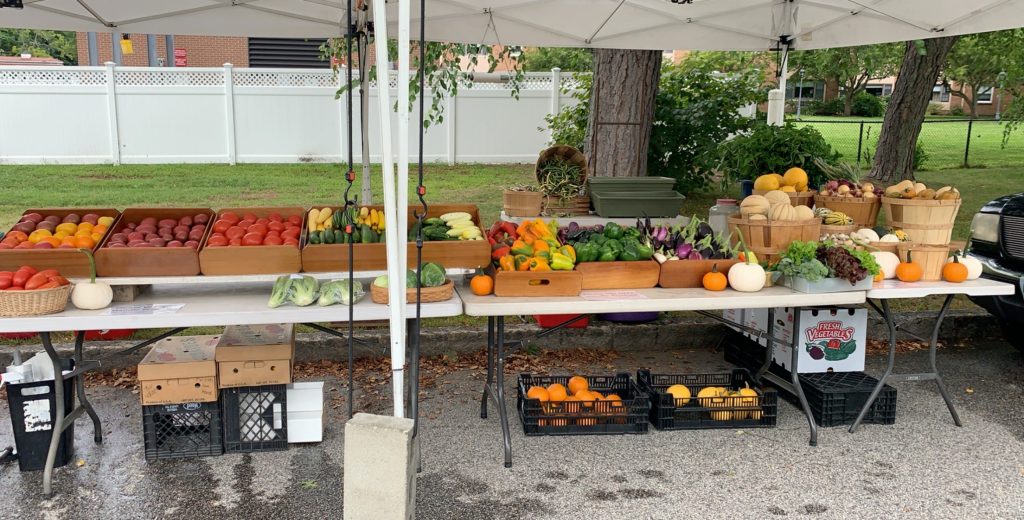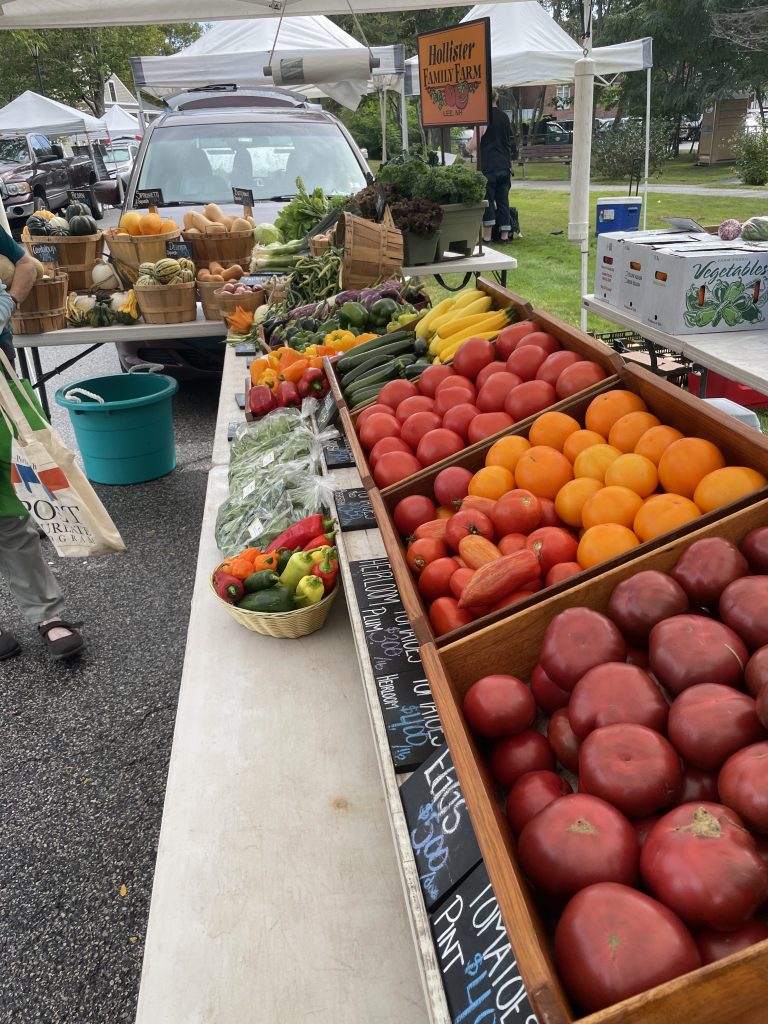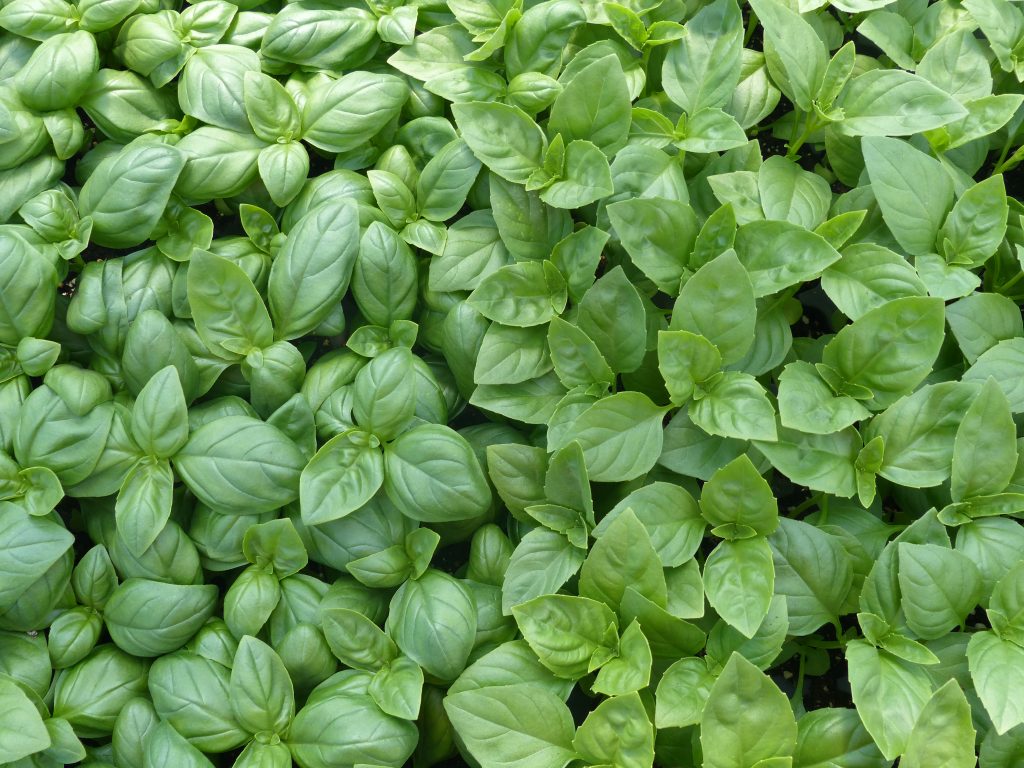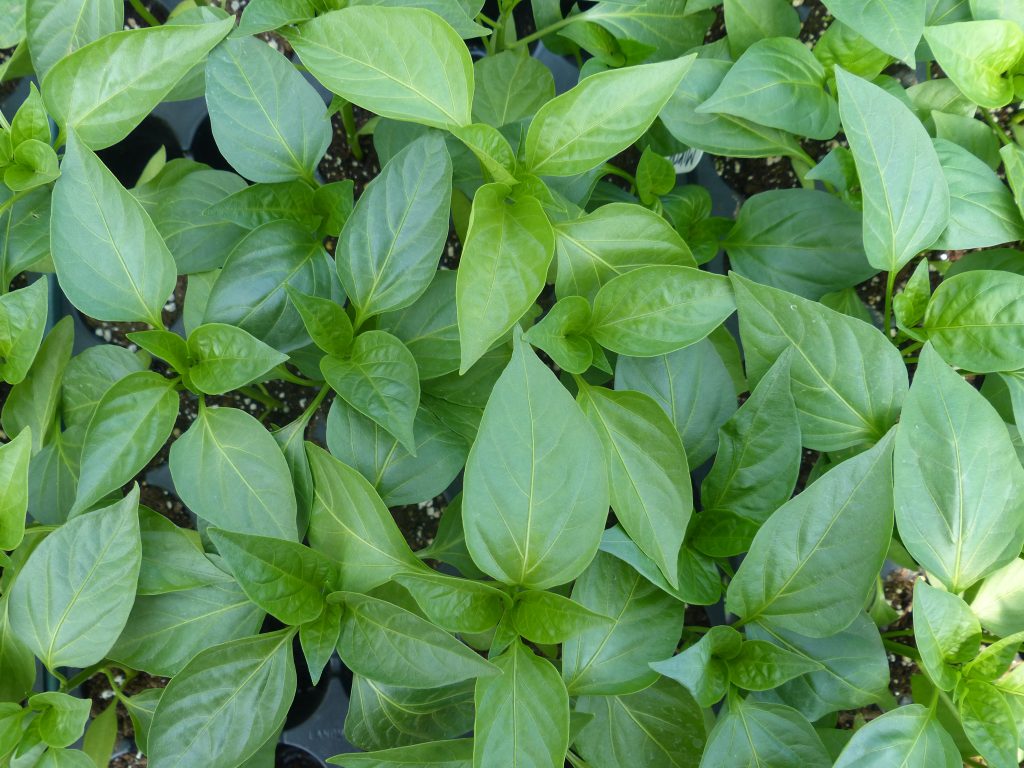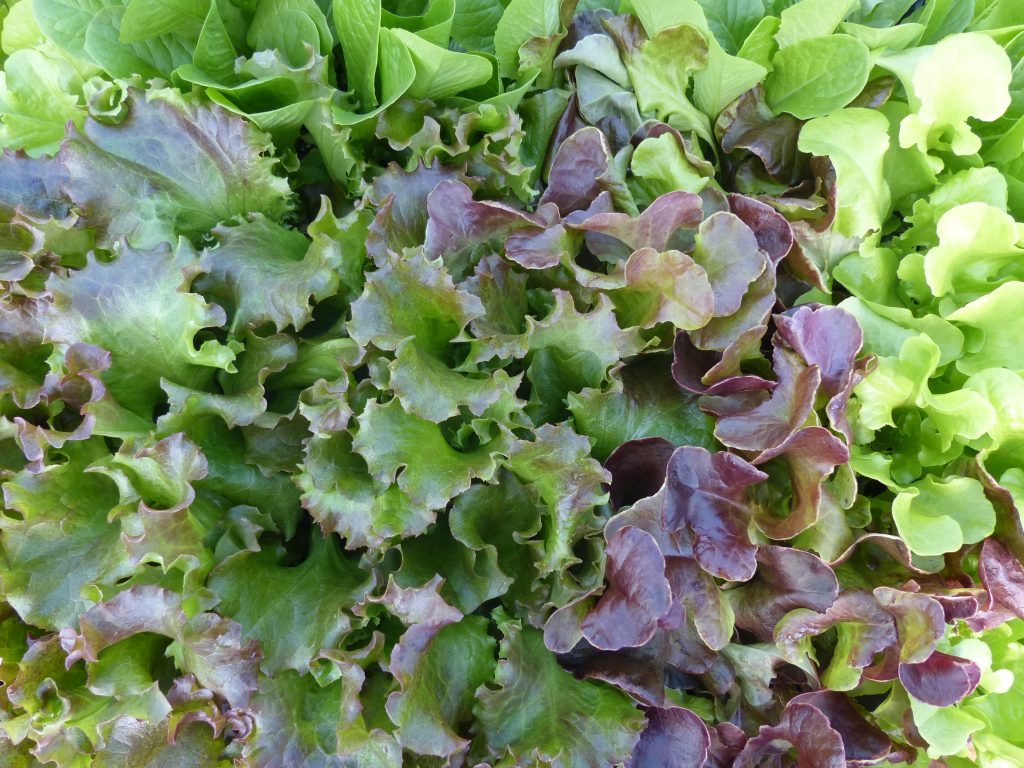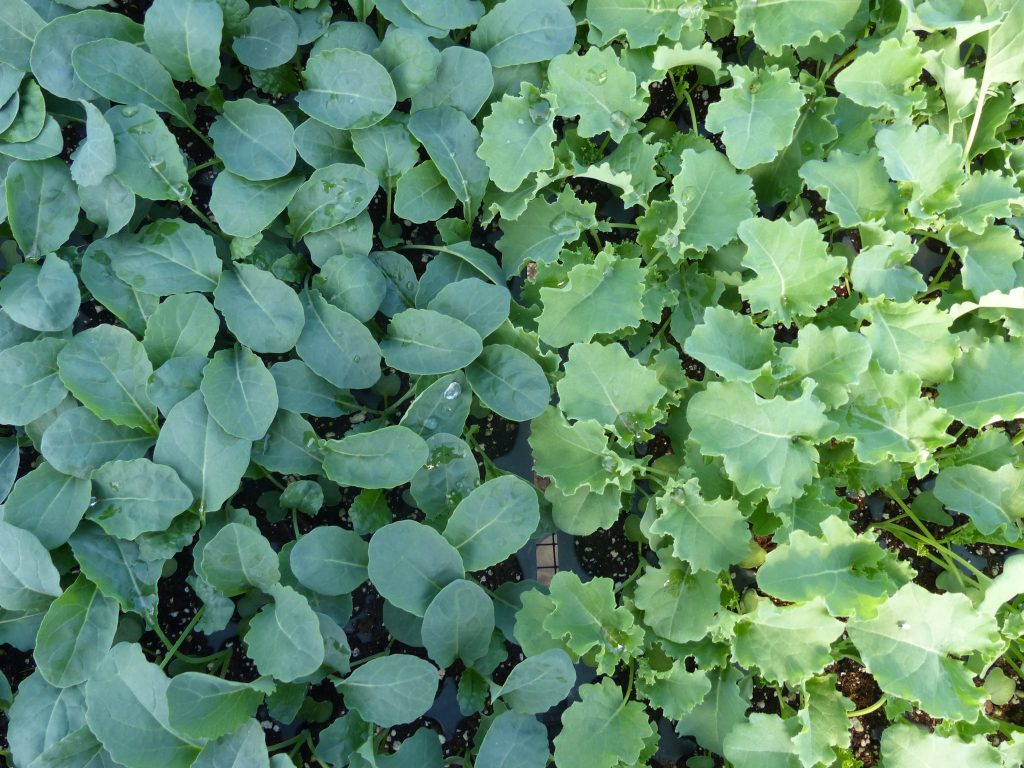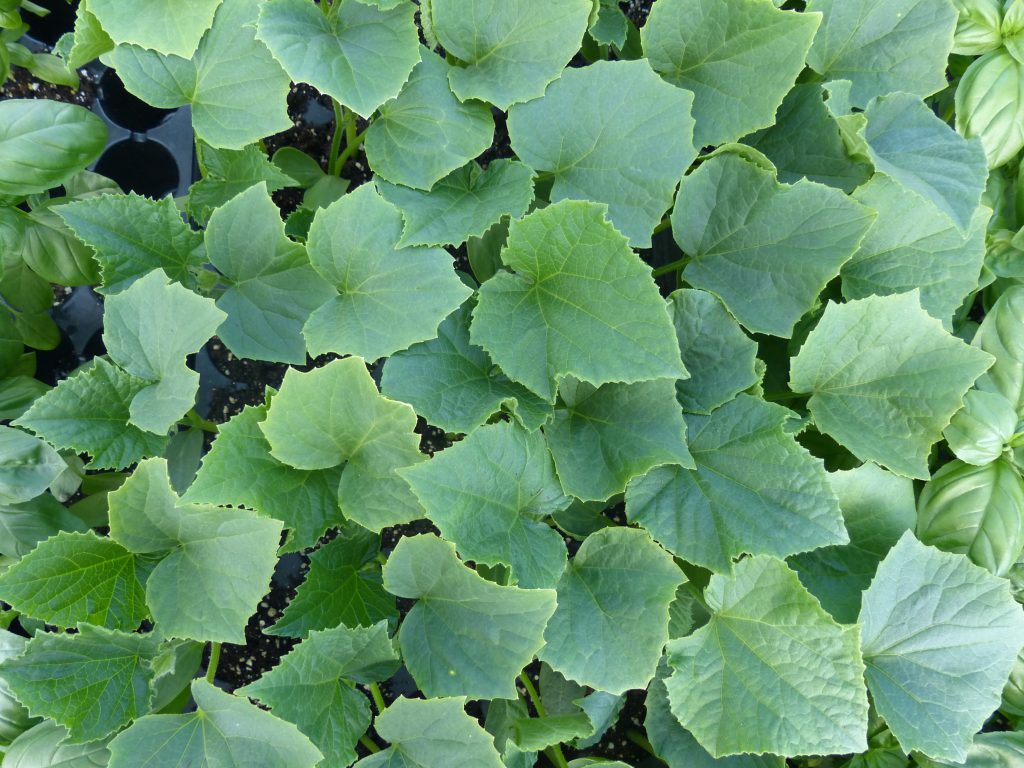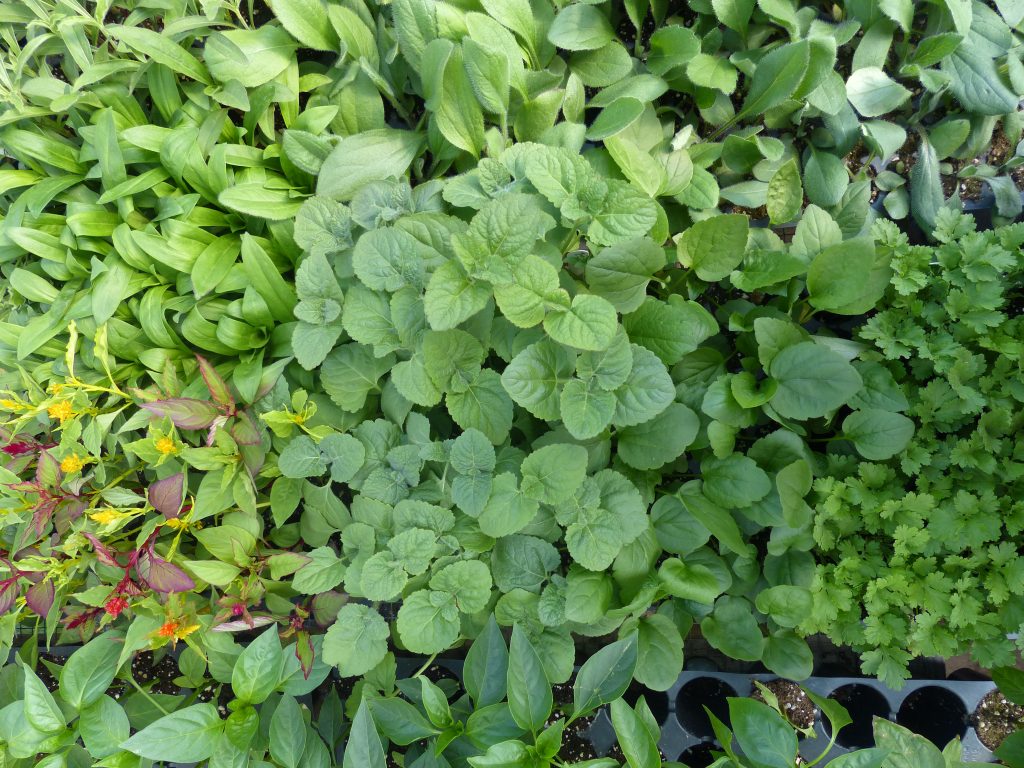The bee hives are buzzing and active on a balmy 70-degree day when I arrive at The Hollister Family Farm in Lee, NH.
With 83-acres to manage—three in intensive vegetable production—that will yield thousands of tons of produce, plus five greenhouses—containing 36,000 seedlings!—to care for, plus four farmers’ markets to attend every week to sell it all, the Hollister family is as busy, hardworking, and organized as the bees themselves. (Though unlike the bees, they produce through the winter months as well.)
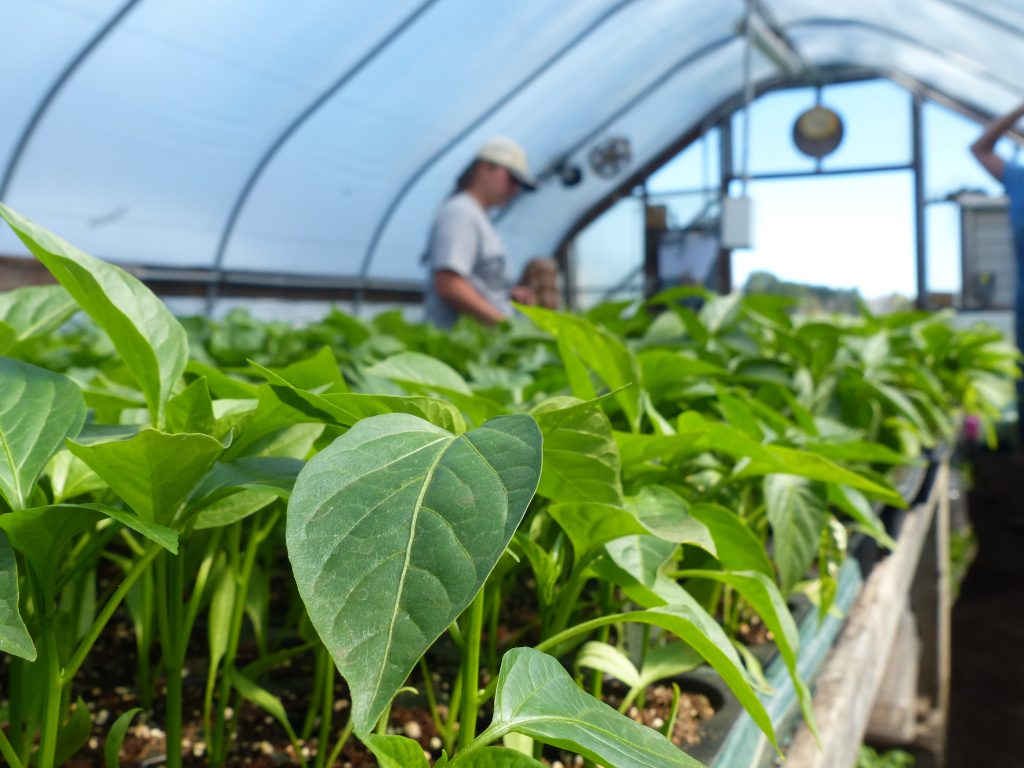
It’s a tremendous amount of work, and it’s all done by Jeff and Melissa Hollister and their daughter, Stephanie. It’s a true family farm in this way: only the family works on the farm, the land is family land, and they live in adjacent houses next door to one another.
Stephanie Hollister, 27, is the most recent to settle down on Lee Hook Road, buying the house next door to her parents in 2021. After graduating with an Animal Science degree in 2017 from UNH, and working in research and at the UNH dairy, Stephanie now works on the farm full-time for the first time in 2022.
But she’s no stranger to farm work.
Growing up on the farm, she learned from her mother how to plant and harvest. By middle school, she was selling cut flowers to florists and bouquets at a roadside stand. Come high school, the bus dropped her off each Thursday to staff the farm’s booth at the Lee Farmers’ Market.
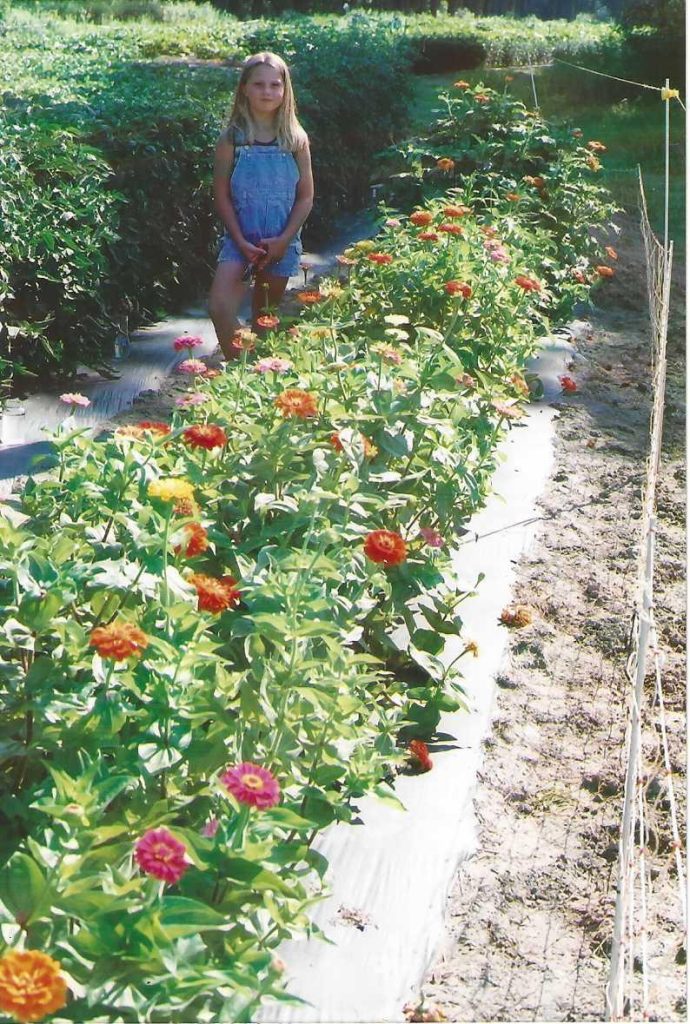
After learning the family and farm history, Stephanie and Melissa give me a tour. We start in the greenhouses which are lush, neat, and full to the brim. The first one contains perfectly spaced and staked tomatoes that are already knee-high. In another, a pattern of intercropped greens looks like a verdant patchwork quilt. The remaining three house thousands upon thousands of healthy, vibrant seedlings sprout from varying size cells and pots.
The greenhouses truly live up to the phrase “plant nursery.” It’s clear that the Hollisters tend the plants with as much care and attention as if they were actual babies.
They are nurtured, as Stephanie says, “like the treasures they are.”
I ask them to take me through their process.
In the case of seeds, the process spans thirty-five years with the careful selection and trialing of seed varieties. This year, the family will plant forty-five varieties of tomatoes alone—including paste, cherry, slicers, plums, and heirlooms. With seeds ordered and a crop plan made, Jeff then mixes the seeding soil in five-gallon buckets, combining potting soil with a custom mix of nutritional amendments. Stephanie will follow to seed the trays one at a time and she and Melissa will water them twice a day. They use a child’s size Wonder Woman watering can which surprises me but they swear by it because of the gentle flow it produces.
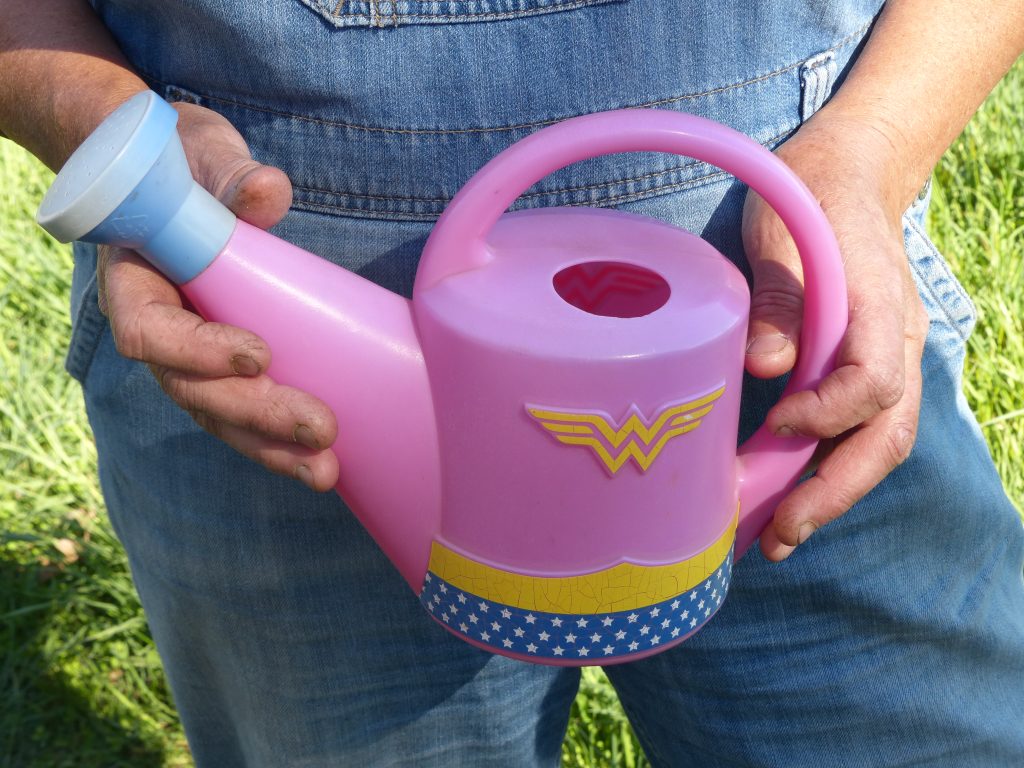
Monitoring the greenhouses is another important aspect for keeping the plants happy. Every day, someone must roll the the plastic sides of the greenhouse up or down, depending on if it’s too hot or too cold. Fans and heaters run to moderate temperature as well. It’s a balancing act to find the sweet spot, and it’s all weather dependent so there’s no easy way to plan ahead for this variable.
With thousands upon thousands of seedlings destined for a variety of locations, organization is paramount. The seedlings will go to their annual seedling sale, four farmers’ markets, and of course, in their fields. The family uses a color coded system of stakes to identify which flats are destined for which location along. They also use a series of Google spreadsheets that Stephanie has created, an upgrade from the notebooks of years prior.
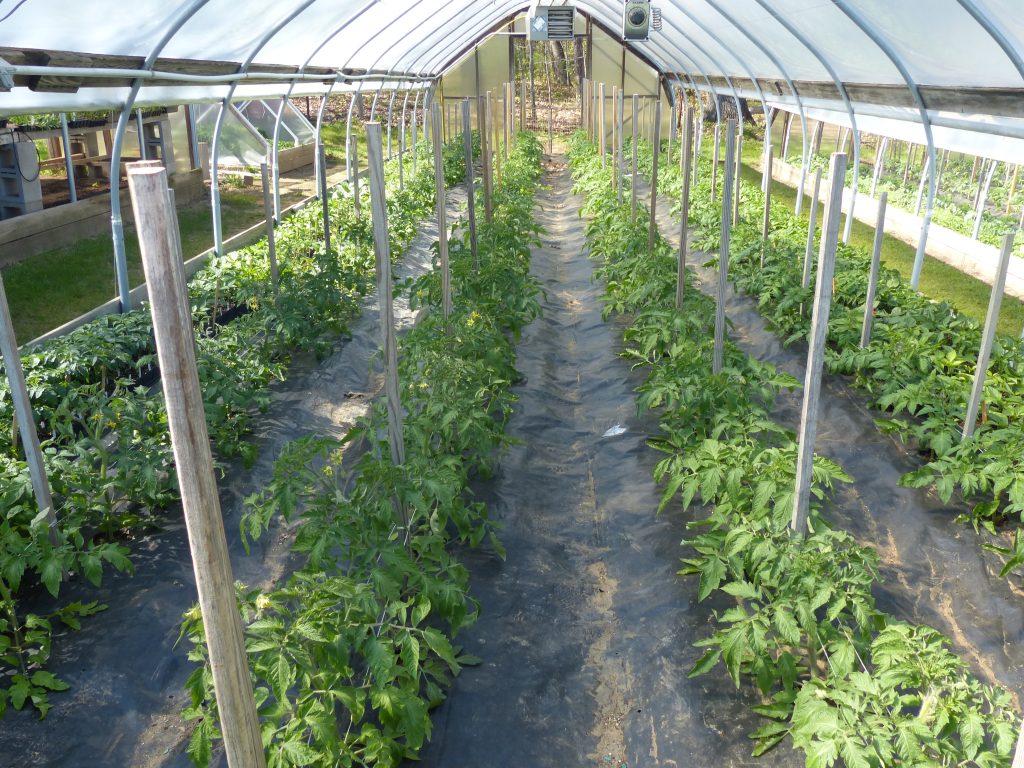
Like with children, the work isn’t done when they leave the nursery.
With the tour of the greenhouses complete, we move on to the fields. They are a scenic view, rolling between the woods on either side. Stephanie and Melissa calculate that they handle each seedling between two and six times—from the initial seeding to potting into larger pots to planting the ground. Then there’s the field prep, transplanting, and all the work that comes once the plants are in the ground: irrigating, weeding, fertilizing.
There are often surprises along the way, too. Some plants, like tomatoes, require extra steps like pruning the suckers and trellising. Sometimes $75 worth of seeds fail, including ones people really like, and you have to figure out how to make up the difference. Sometimes (like this year) you face a national potting soil shortage because of issues sourcing peat in the supply chain. Needless to say, farming is anything but predictable.
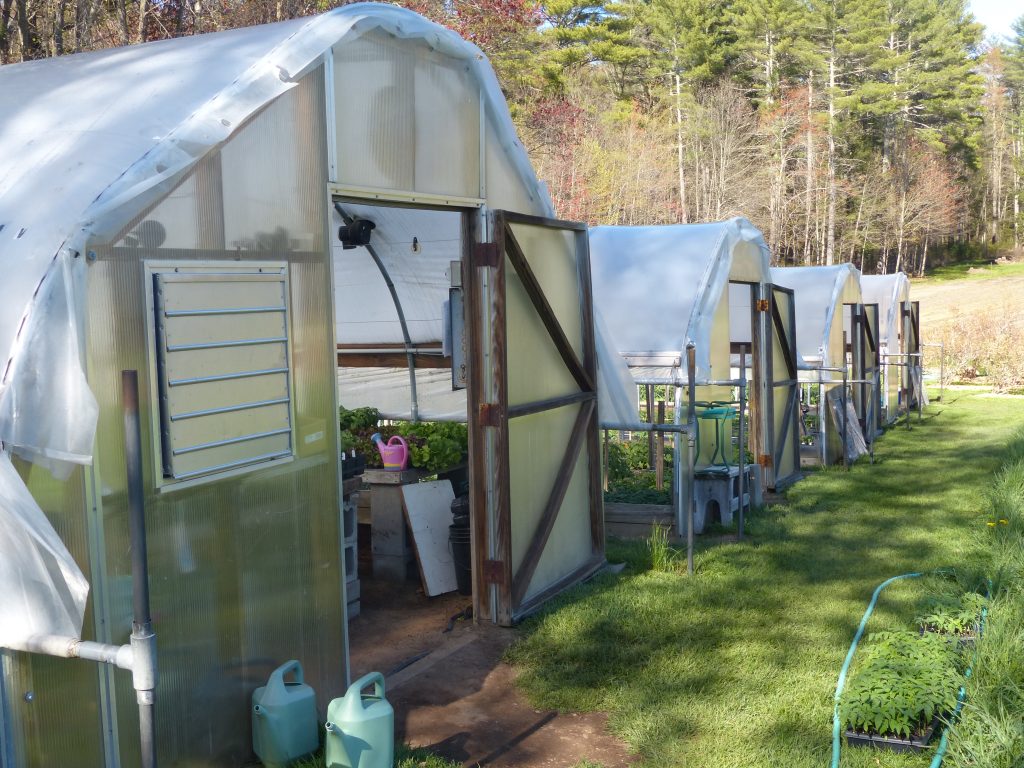
When it’s finally market day, the Hollisters pick everything fresh that morning.
Then they wash or wipe everything down, package, load, and haul it all to the market site. The loading and unloading of the truck for market is Stephanie’s least favorite part of the job. However, it’s counter-balanced by her favorite part: interacting with the customers. “It’s all worthwhile when people are happy with your product.”
Like the bees that Melissa cares for (and researches hive survival through the winter), the Hollister Family shares the daily labor of operating a farm. They work hard—harder than I can adequately express here—to care for their seedlings, plants, and land to produce the food that makes it to our tables. So the next time you see Stephanie, Jeff, and/or Melissa, let them know just how happy you are!
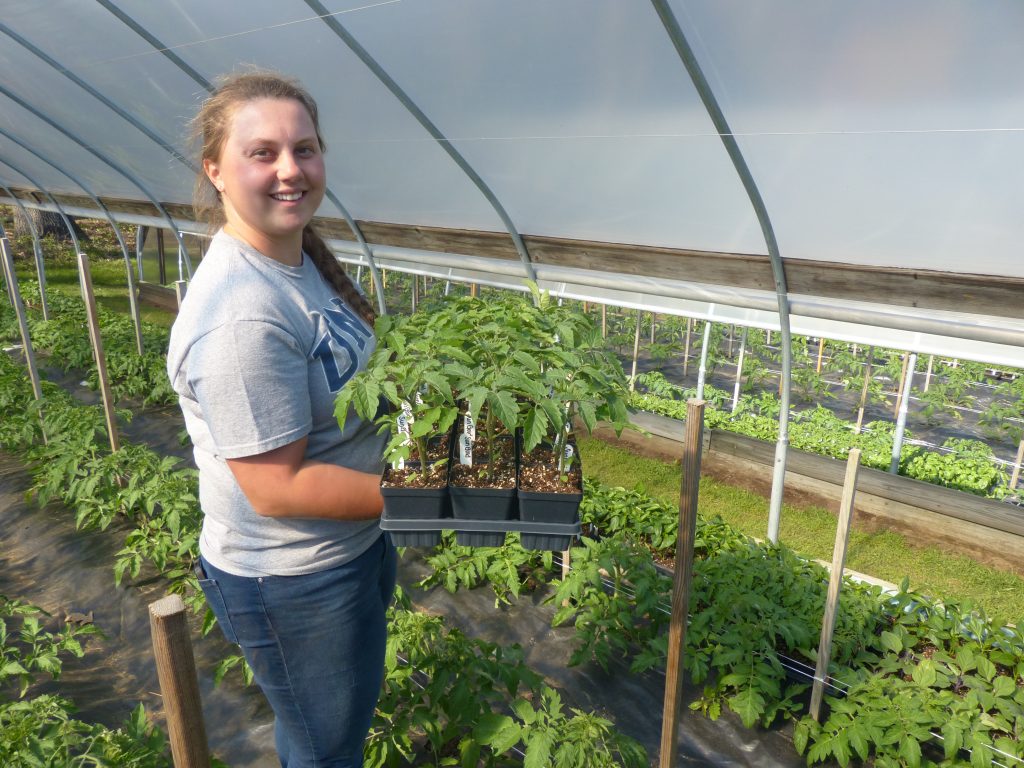
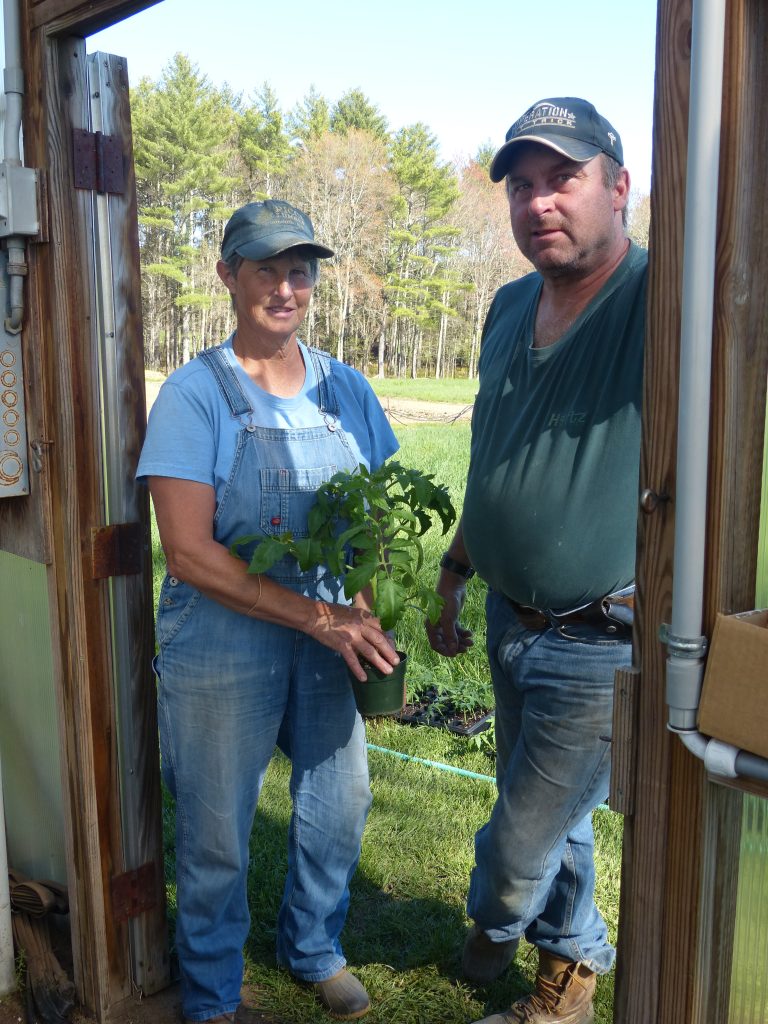
To support The Hollister Family Farm, visit their booth at the Durham, Dover, Exeter, and Portsmouth Farmers’ Markets. Be sure to also check out their seedling sale preorder in May next year (it’s closed for this year though they will have seedlings for sale at market) as well as follow them on Instagram and Facebook (@thehollisterfamily farm).
PS – If you are reading this, then we’re guessing you’re likely already pretty aware of how much work goes into farming. But as centralized, larger scale agriculture has become the norm, we’d love it if you would share this with a friend, family member, or co-worker who might not (yet!) shop local. The farmers’ are working hard to keep local food, resources, and nutrition in our community. Part of our job is getting the word out so we keep these fields and farmers, and all of their knowledge and wisdom, going strong for generations to come. Thank you!!
